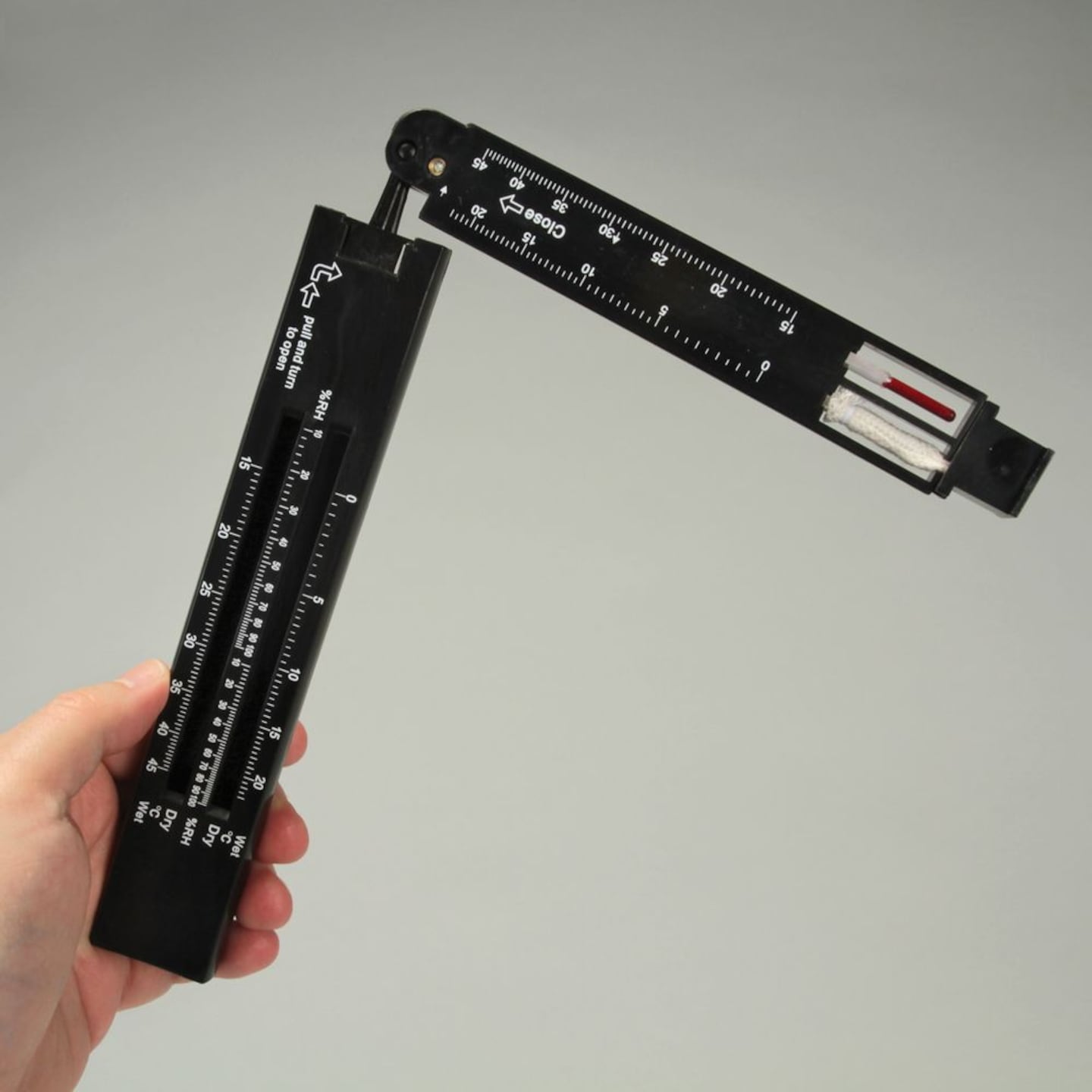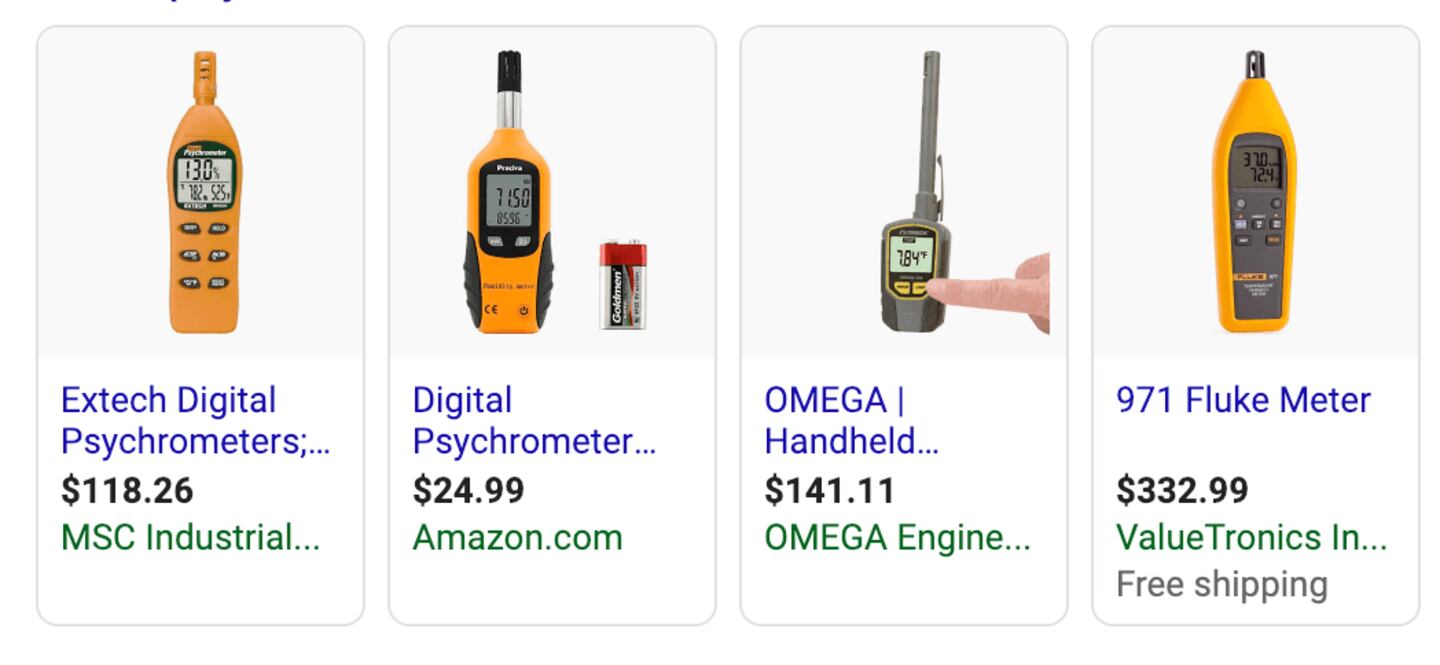The hygrometer is the instrument that measures relative humidity, the humidity is relative to the air temperature.
This can confuse people because if you hold the ACTUAL water vapor constant but heat or cool the air the RELATIVE humidity will go down or up even though the actual moisture content is unchanged.
As a rule cold air is dry air. And when you bring that air inside your house and heat it up, the relative humidity drops even more.
The lower the temperature of air the less capacity it has to hold moisture in a vapor state, so you can have a high relative humidity reading but the actual amount of water vapor in the air (absolute humidity or humidity ratio) will be low.
Meteorologists look at the wet-bulb reading or the “dew point” to see if air is moist or dry. For example, on a hot humid summer day the dew point may be 65-72 or as high as 83. But on a cold dry day like today in Atlanta the dew point (DP) is only in the teens or lower:
Studies indicate most people are comfortable with an indoor relative humidity (RH) that is half the indoor temperature.
So, if you’re a 68F in your home person your aim is 34% indoor RH. If you’re a 72F indoor person your aim is 36% indoor RH.
Lets say that outside the temp is 32 with a relative humidity of 100%. Seems moist but the actual water vapor in 32F air is low.
SO... bring that outside air in your home and the furnace warms it to 70. NOW the humidity in your house is 20%. As a result you may feel a chill at times if lightly dressed. And that dry air will draw moisture out of your furniture and walls and your skin and lips resulting in dry and itchy skin, chapped lips, tiny cracks in walls and furniture, and static electricity shocks when you walk across the carpet and touch a doorknob or something, or you may see and hear snap crackle “lightning” visible on your blanket in the dark as you move your hands and legs over it.
Meteorologists use a “sling psychrometer” to measure the moisture in the air:
Less precise is a hygrometer as pictured in the first photo of this blog. Mine at home is below along with analog thermometer and barometer, more decorative than scientific:
For more precise readings indoor or outdoor you can buy a psychrometer:
There are also free APPS for your smartphone.
If your indoor humidity is too low you can add a room or whole house humidifier, or if too moist a dehumidifier.
Follow me on Twitter @MellishMeterWSB.















